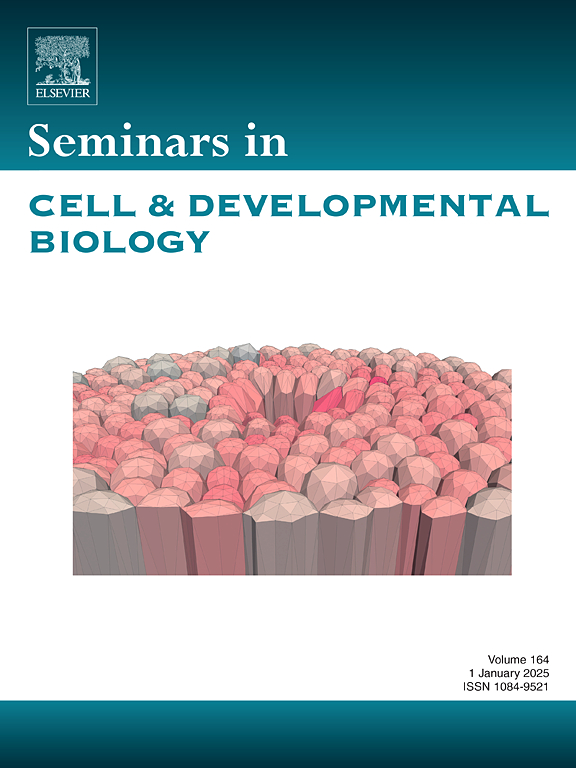Curvature feedback for repetitive tissue morphogenesis – Bridging algorithmic principles and self-regulatory systems
IF 6
2区 生物学
Q1 CELL BIOLOGY
引用次数: 0
Abstract
Tissue patterning during organ development consists of intricate morphogenetic processes, driven by the interplay of physical and genetic cues among constituent cells. Despite its complexity, these processes can be decomposed into fundamental morphogenetic motifs that appear repeatedly in a spatiotemporally organized manner, giving rise to diverse organ architectures. Recent studies have highlighted tissue-scale curvature as critical information for constitutive cells, which enables it to bridge mechanical and biochemical signals. In this review, we discuss the regulatory principles underlying the roles of tissue curvature in morphogenesis along with recent insights from earlier studies. Here, we focus on the dual role of tissue curvature as an instructive signal that directs collective cell behavior and as a dynamic property modulated by cellular activities. First, we introduce the concept of morphogenetic motifs and provide examples from developmental processes in various organ systems. Next, we discuss how cells collectively respond to two distinct curvature types, lateral and topographical, and examine the mechanisms by which cells sense these curvatures from a mechanobiological perspective. Finally, we highlight the repetitive terminal bifurcation in developing murine lung epithelium, illustrating how curvature-driven feedback loops, mediated through mechano-chemical multicellular couplings, ensure robust morphogenetic cycles. By integrating geometric, mechanical, and chemical cues, curvature feedback emerges as a framework for self-organized morphogenesis, providing fresh perspectives on the recurrent properties and robustness of development.
重复组织形态发生的曲率反馈-桥接算法原理和自我调节系统
器官发育过程中的组织模式由复杂的形态发生过程组成,由组成细胞之间的物理和遗传信号相互作用驱动。尽管复杂,但这些过程可以分解为基本的形态发生基序,这些基序以时空组织的方式反复出现,从而产生不同的器官结构。最近的研究强调,组织尺度的曲率是构成细胞的关键信息,使其能够连接机械和生化信号。在这篇综述中,我们讨论了组织曲率在形态发生中的作用的调节原理以及早期研究的最新见解。在这里,我们关注组织曲率作为指导集体细胞行为的指向性信号和作为细胞活动调节的动态特性的双重作用。首先,我们介绍了形态发生基序的概念,并从各种器官系统的发育过程中提供了例子。接下来,我们讨论细胞如何集体响应两种不同的曲率类型,横向和地形,并从机械生物学的角度检查细胞感知这些曲率的机制。最后,我们强调了发育中的小鼠肺上皮的重复末端分叉,说明了曲率驱动的反馈回路如何通过机械-化学多细胞偶联介导,确保稳健的形态发生周期。通过整合几何、机械和化学线索,曲率反馈作为自组织形态发生的框架出现,为循环特性和发展的稳健性提供了新的视角。
本文章由计算机程序翻译,如有差异,请以英文原文为准。
求助全文
约1分钟内获得全文
求助全文
来源期刊
CiteScore
15.10
自引率
1.40%
发文量
310
审稿时长
9.1 weeks
期刊介绍:
Seminars in Cell and Developmental Biology is a review journal dedicated to keeping scientists informed of developments in the field of molecular cell and developmental biology, on a topic by topic basis. Each issue is thematic in approach, devoted to an important topic of interest to cell and developmental biologists, focusing on the latest advances and their specific implications.
The aim of each issue is to provide a coordinated, readable, and lively review of a selected area, published rapidly to ensure currency.

 求助内容:
求助内容: 应助结果提醒方式:
应助结果提醒方式:


